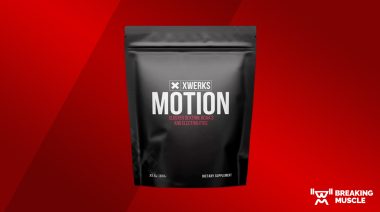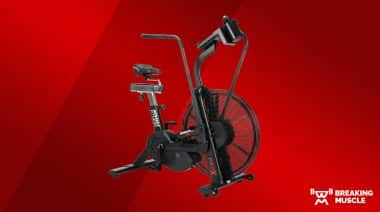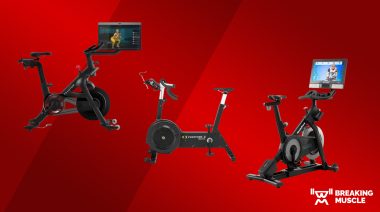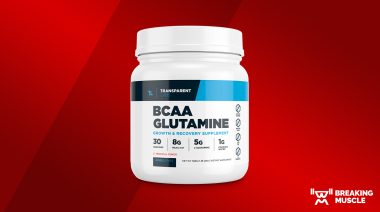Pulse Beat Fit receives no compensation in exchange for reviews. We received this product for free and did not experience typical customer service. The opinions expressed belong solely to the writer.
Pulse Beat Fit receives no compensation in exchange for reviews. We received this product for free and did not experience typical customer service. The opinions expressed belong solely to the writer.
Father time waits for no man. If you’re overy forty like me, you’ve been noticing a steady decline in your abilities for some time now. And the older you get, and the fitter you once were, the bigger that difference will become.
Not so long ago doctors advised patients over the age of forty to slow down and take it easy. But these days, masters athletes have more options available than ever before – from age-group competition in a variety of sports to the CrossFit Games.
Meet Joe Friel
Joe Friel has been around competition as a racer and coach for as long as I can remember.
At seventy, he has been writing about performance and coaching since I was in high school. I remember reading some of his early articles in various cycling magazines. Back then, he was a calm voice of systematic reason in what was otherwise an era of chaotic training.
What Friel is best at is reverse engineering how top athletes perform and then explaining it to the reader in simple, easy-to-use terms.
One of his first books – The Cyclist’s Training Bible – remains one of Amazon’s top sellers today and is in its fourth edition. This early book took the periodization of training and racing needed to successfully compete and made it easily available to endurance athletes for the first time.
Friel’s new book, Fast After 50, focuses on a question he’s been working on for the last twenty years – how do you stay fast at fifty-plus?
The Mature Athlete Trap
Many mature athletes fall into the trap of swapping hard work for easier sessions.
It’s one of the reasons you see large numbers of older guys in events like Ironman. But as Friel started to dissect the relationship between aging and fitness, he found out a few interesting things.
“Friel’s look into countless studies shows those who swap high intensity work for easy, stress-free sessions ultimately pay the price with greater drops in their fitness.”
The basic premise of the book is that intensity must still play a part in training, regardless of age. Friel’s look into countless studies shows those who swap high-intensity work for easy, stress-free sessions ultimately pay the price with drops in their fitness.
Balance Intensity and Recovery
The double-edged sword of intensity is obviously that recovery becomes harder. This is compounded when you’re dealing with mature athletes, as they already have limited recovery ability compared to younger competitors.
This is where Friel’s experience shines through. Friel has provided a simple, step-by-step planning process for all events.
This process takes into account the various types of fitness needed to compete at high levels, regardless of age.
Broken into aerobic capacity, lactate threshold, aerobic threshold, and weight lifting, the major session types are also broken into low, medium, and high doses so you can easily create your own workouts.
Friel also delves into the various factors accounting for recovery and how to enhance them. Each session in his program is planned to allow for enough hard work to stimulate fitness, but not so much as to crush the body with fatigue.
“Friel has plenty of evidence to support that if you don’t use it you’ll lose it. In fact, his research shows that if you don’t keep working hard (or as hard as you can) as you age that your fitness will eventually end up the same as your sedentary counterparts.”
One of the things people often misunderstand is the relationship between how much hard work versus easy work is done in a training cycle.
Endurance athletes probably figured it out well before most strength coaches, although classic Russian strength templates show a mix of hard to easy that is roughly the same. It’s the same CNS and the same muscles, so why shouldn’t training be consistent regardless of discipline?
How Much Intensity?
Friel suggests between five and fifteen minutes of higher intensity work within any given session.
This split, averaging ten minutes per session, gives the same eighty-twenty mix that Matt Fitzgerald spoke of in his book 80/20 Running. What makes Fast at 50 unique is that the author is advocating continuing to train the same way even as you age.
Looking at research on aging, this recommendation makes a lot of sense. Friel has plenty of evidence to support “if you don’t use it, you’ll lose it.” In fact, his research shows if you don’t keep working hard (or as hard as you can) as you age that your fitness will eventually end up the same as your sedentary counterparts.
In other words, no matter how fit you were, if you stop, it will be as if you never exercised, regardless of how long you’ve been an athlete or how proficient you were.
My Conclusion
Fast at 50 should be essential reading for all coaches. The personal training market is filled with clients who are forty-plus, and the message and planning in this book would be good for more trainers to understand.
“Fast After 50” is available for $17.32 at Amazon.com.
You’ll Also Enjoy:






